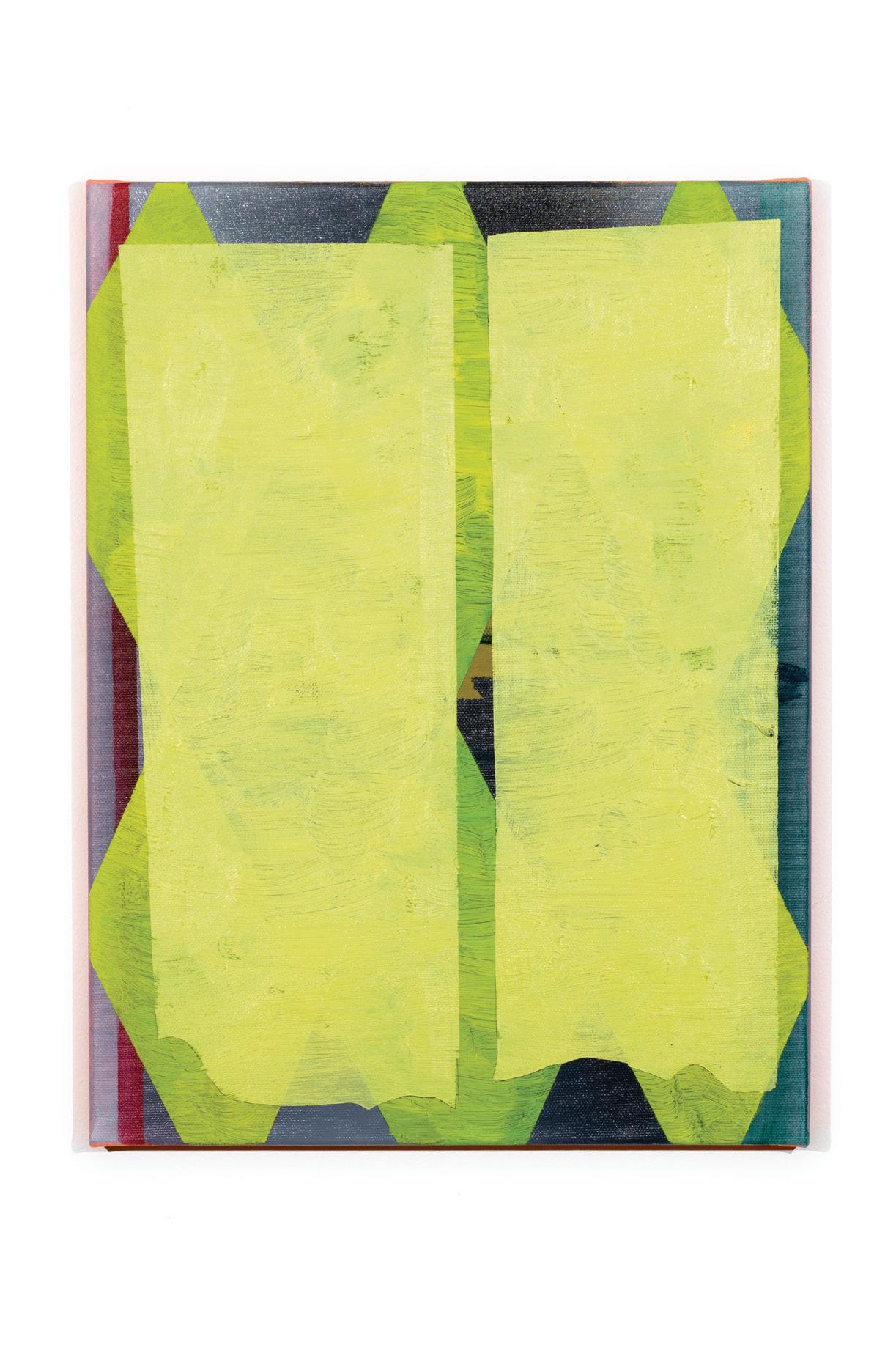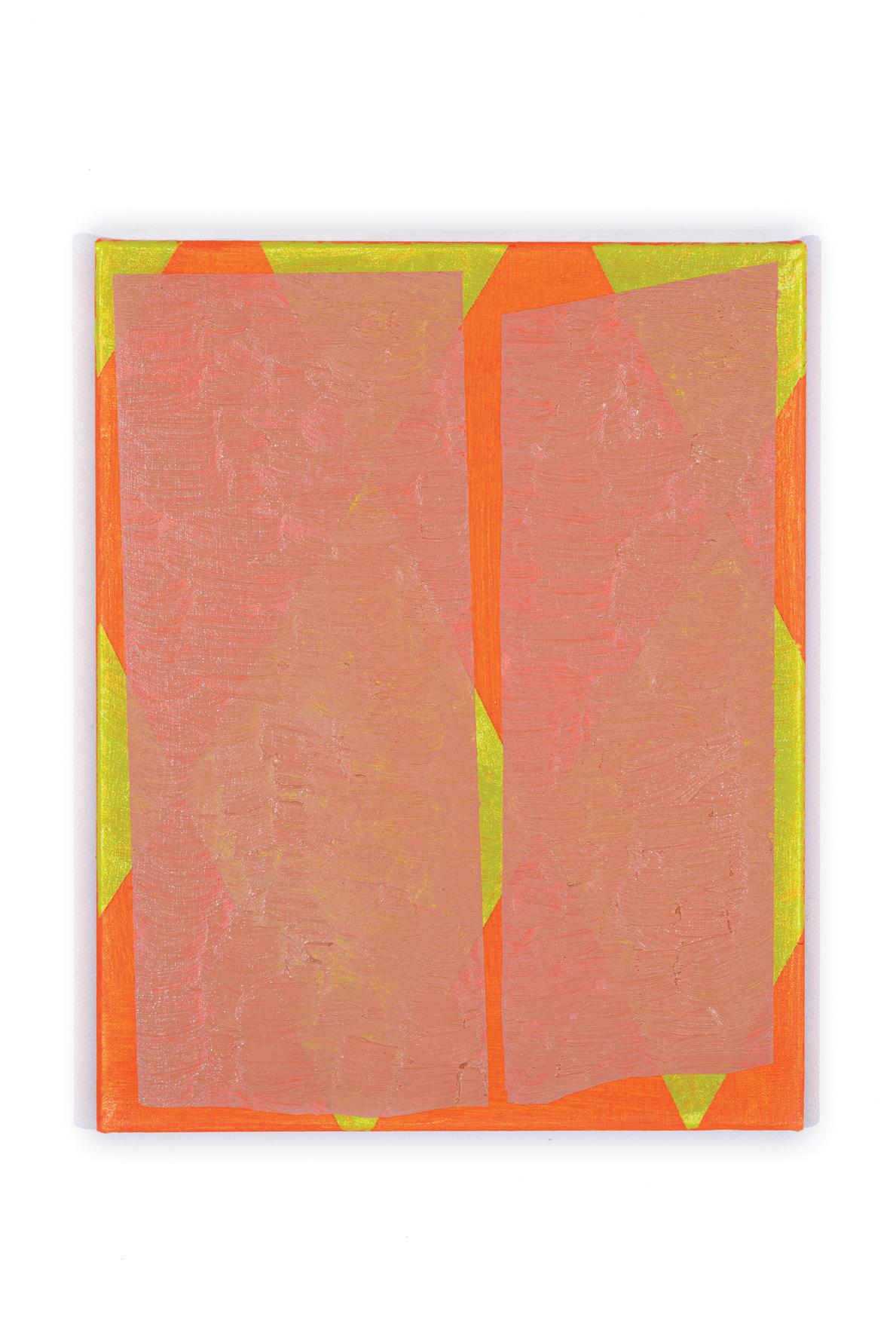Sullivan’s Objects





While abstraction can seem removed from the world we see around us, each abstract painter draws on that world, and often with a book in hand. It’s impossible to paint without thinking hard about questions that land, in philosophical terms, within ontology, epistemology, and phenomenology. A painting that appears to be about nothing in particular is likely to be about something in general.
To read involves active engagement with objects that are either named, in a radical simplicity, or described with the help of words of all kinds: adjectives, adverbs, verbs and prepositions of time, place and possession. I’m reading these works with a book in hand: Maël Renouard’s Fragments of an Infinite Memory: My Life with the Internet (2016/2021). Describing the process of academic publication, Renouard suggests that:
the book - the book form, the codex, as opposed to the immediate exhibition characteristic of the internet appears less and less as a means of making things public and, strangely enough, more and more as an obstacle to reading, or, to put it otherwise, as a sanctuary, a distant and secret refuge protected from the curiosity of readers (Renouard 2021, 99).
Many years ago I read of a man who had lost his sight at a young age. He retained visual memories only of people with whom he had had no contact after this event: memories of the people he continued to engage with referred to auditory and tactile sensations. The exhibition is constructed as a set of images that show the imaginary Sullivan’s engagement with objects that vanish from possession through the very means of trying to grasp them, either as mental or physical objects through the medium of a book. A cloud book sounds like two things: a book of clouds (thinking of Hubert Damisch’s account of the historical impact on the art of painting of the difficulty of depicting a cloud, or the Chinese instructional manual on the painting of clouds); and the notion that all knowledge may be contained in a digital repository disingenuously dematerialized by its characterization as “the cloud”. (Damisch 2002).
Twin pagelike forms, divided at the centre, obscure painted forms that lie behind them, hidden yet life- and light-giving. A rim of fluorescent colour throws light onto the walls that hold the painting, bringing them into the equation. The paintings play several tricks with perception. The fluorescent edges seem to generate light. Objects lie behind

the pagelike forms, sometimes emerging through the transparency of the upper layer of paint. But these pages are not joined, as in a book, by seams or folds. Instead, light breaks through the centre: they are detached leaves, of uncertain shape: they might be twisted, fluttering. But they are also objects that impede access to the forms that lie behind them, forms constructed in geometric diagonals. From a distance these turn into curves, serpentine forms that appear to move behind the twin pages.
The work is clearly about things that are overlooked, but essential: as in the notion of the parergon, the frame, both literal and contextual, that makes all intelligible reception possible. A double fold indicates the old codex form of the book. But what of the digital reader, whose pages are indeed backlit, do not occur as a narrow rectangular box, but float in virtual space? That fluorescent light does indeed suggest the energy of the digital, drawing its sources from cunningly dematerialised carbon deposits aeons old, and accessing that cloud, whose contents Sullivan seems to be enumerating.
It seems that the very act of engagement hides things from view, while at the same time the works remind me that to read a painting has been exhaustively understood as the art of making meaning. In an exhibition earlier this year, Greaves placed vertical but more narrow forms side by side, sometimes adjacent, sometimes with spaces in between, that got in the way of other things: walls, or in one case an orange electric cord and plug.
The objects of Greaves’ previous works have moved into abstraction. Books, minds, and paintings are equated in these works. In the mind things move into another country. A book, a vase, a bicycle, another sentient being, do matter, but as objects of perception they morph into generalisations, and not in a Platonic way. Instead they sit bound within their contexts, as apples that will be eaten, flowers that were held: as facilitators of connections. As Bruno Latour once noted, objects appear to have no agency but make all the difference, a point that was taken up by speculative materialism, shifting the locus of value from the perceiver‘s relationship with the thing to an egalitarianism between perceiver and thing. (Latour 2004). The phenomenology of perception, and the neuroscience of memory, play strange games with those objects once characterised as mere real things. In this suite of works, the act of connection, like a lightning rod, breaks apart what gets in the way.
– Hubert Damisch. A Theory of /Cloud/: Toward a History of Painting. Stanford, California: Stanford University Press, 2002.
– Bruno Latour. Politics of Nature: How to Bring the Sciences Into Democracy. Cambridge, Massachusetts: Harvard University Press, 2004. p 88 – Maël Renouard. Fragments of an Infinite Memory: My Life with the Internet. New York: New York Review of Books, (2016/2021).
Bridie Lonie PhD has worked in art education throughout her life and is an Emeritus Member of Otago Polytechnic, Dunedin, New Zealand. She was a founding member of the Women’s Gallery in Wellington in 1980, and has published on feminist artists, climate change and the Anthropocene.


The Great Wall (Sullivan’s Note Book)
Acrylic, pigment and oil on linen 40.5 x 45.5cm 2022

Drawing Stuff in Amber a(Book 12)
Acrylic, pigment and oil on canvas 30.5 x 40.5cm

How the Present Contains Such a Bright Shard of the Living Past.
Acrylic, pigment and oil on canvas
35.5 x 45.5cm 2022

A Fatigue from the Distance Covered (Sullivan’s Hidden Book)
Acrylic, pigment and oil on linen 30 x 38cm


The Last Book
Pigment and oil on canvas 40 x 50cm



Michael Greaves (b. 1976) is Principal Lecturer at the Dunedin School of Art. He holds degrees in both Art History and Education as well as a Master of Fine Arts in painting (distinction). He has works in several public and private collections here in New Zealand, and is represented in multiple private collections in Australia, the UK, Europe, and America.
Sullivan’s Objects is a reference to time in painting. Time of making, time of viewing, a condensation of both. I feel like the painting is a record of multiple moments, and thoughts that run parallel to the process of considered studio work. I like what Alan Smith said in a recent catalogue essay accompanying the exhibition Necessary Distraction: A Painting Show (Auckland Art Gallery Toi o Tāmaki, 2016) that, “Painting has always occupied a space between the material and the idea, the sensible and the immaterial…(that) a Painting is like a membrane, access-panel, hinge, skylight, fairy fabric, and dream screen … here and elsewhere.”
This notion of here and elsewhere speaks to me in the act of painting, of mis-remembering a thing or object of the world which forces you to shift toward a reliance on sensation and experience to image, or imagine, the painting. Elsewhere is now, not an unknown place for the painter, but an access to almost everything at the touch of a screen. I like to actively disrupt this, accumulating layer upon layer of paint onto the surface to realise, and access, the feeling and sensation of the act of mis-remembering.
This collection of work, Sullivan’s Objects, draws its attention towards a fictional character and their collection of objects, in their world. For Sullivan there is an escape into an imagined world of everything, of books, and how books can activate this imagination in unresolved ways.
This work is part of a broader series of work to be shown at Five Walls in Melbourne in November of 2022, and again at Melanie Roger Gallery in Auckland in early 2023.
Michael Greaves, October 2022 www.michaelgreaves.com

Published by Otago Polytechnic Publications on the occasion of the exhibition Sullivan’s Objects, at Five Walls Gallery Suites 2, 3, & 4, Level 1, 119-121 Hopkins Street Footscray VIC 3011.
Directors: Aaron Martin and Missy Ueda info@fivewalls.com.au – www.fivewalls.com.au
Published in New Zealand by: Otago Polytechnic Publications Forth Street Dunedin 9016 – www.op.ac.nz
Otago Polytechnic Ltd is a subsidiary of Te Pūkenga - New Zealand Institute of Skills and Technology.
© 2022 Michael Greaves, and contributing writer Bridie Lonie
All rights reserved. No part of this publication may be used except in accordance with the provisions of the Copyright Act 1994 or with the written permission of the authors.
The author gratefully acknowledges the publishers, institutions and Five Walls Gallery for their contrubutions and support for this project.
First published 2022
An online version of this publication is available free at https://online.op.ac.nz/industry-and-research/research/epublications/e-books
ISBN: 978-0-908846-81-8 (print)
ISBN: 978-0-908846-85-6 (online)
DOI: http://doi.org/10.34074/cata.221102
Copyediting: Sylvie Kaos
Design and typesetting: Michael Greaves
Printing: Otago University Print
Photography: Thomas Lord
Cover credits: Michael Greaves
Cover image: How the Present Contains Such a Bright Shard of the Living Past. Acrylic, pigment and oil on canvas, 2022 Back Cover Image: Drawing Stuff in Amber (Book 12), Acrylic, pigment and oil on canvas, 2022


